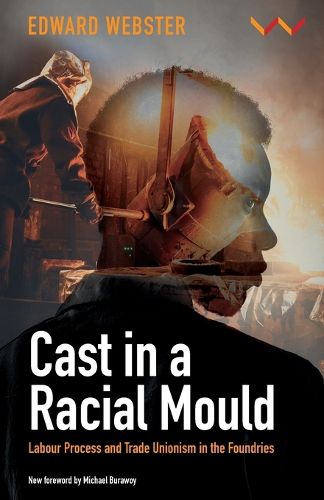Readings Newsletter
Become a Readings Member to make your shopping experience even easier.
Sign in or sign up for free!
You’re not far away from qualifying for FREE standard shipping within Australia
You’ve qualified for FREE standard shipping within Australia
The cart is loading…






First published by Ravan Press in 1985, Cast in a Racial Mould was a pioneering book. It is now republished by Wits University Press with a new foreword by Michael Burawoy and with support from the National Institute for the Humanities and Social Sciences.
Entering what Marx called the hidden abode of capitalism; the labour process; this book analyzes the nature of work and worker resistance in the metal industry which lies at the core of South Africa manufacturing industry. In an introductory chapter Webster points out that most studies of the labour process have neglected worker resistance. He challenges Braverman depiction of mass production as a juggernaut which inherently imposes progressively tighter controls on workers, and points to two forms of worker resistance which have been important in the history of South Africa foundries.
Discussing the first of these in Part I, he shows how resistance to deskilling on the part of white craft moulders gave rise to a distinctive racial hierarchy of control in the foundries. Using race as a last line of defence against machinofacture assault on their craft privileges, the white moulders effectively became supervisors of semi-skilled black labour;The collapse of this form of control was precipitated by the rise, in a South African foundry context, of the second form of resistance ; increasingly confident bargaining by black semi-skilled workers in the wake of mechanization and the emergence of independent black unions. This is the focus of Parts II and III of the book. The onset of popular struggle in the townships from 1976 onwards forced the state, through a process that began with the Wiehahn and Riekert commissions, to embark on an attempt to incorporate black unions in a deracialized industrial relations system. Webster analyzes the interplay between the transformation of the labour process and the crisis in the system of racial capitalism as a whole to show how worker organizations, in resisting the state incorporative strategy, have begun to develop a working class.
$9.00 standard shipping within Australia
FREE standard shipping within Australia for orders over $100.00
Express & International shipping calculated at checkout
Stock availability can be subject to change without notice. We recommend calling the shop or contacting our online team to check availability of low stock items. Please see our Shopping Online page for more details.
First published by Ravan Press in 1985, Cast in a Racial Mould was a pioneering book. It is now republished by Wits University Press with a new foreword by Michael Burawoy and with support from the National Institute for the Humanities and Social Sciences.
Entering what Marx called the hidden abode of capitalism; the labour process; this book analyzes the nature of work and worker resistance in the metal industry which lies at the core of South Africa manufacturing industry. In an introductory chapter Webster points out that most studies of the labour process have neglected worker resistance. He challenges Braverman depiction of mass production as a juggernaut which inherently imposes progressively tighter controls on workers, and points to two forms of worker resistance which have been important in the history of South Africa foundries.
Discussing the first of these in Part I, he shows how resistance to deskilling on the part of white craft moulders gave rise to a distinctive racial hierarchy of control in the foundries. Using race as a last line of defence against machinofacture assault on their craft privileges, the white moulders effectively became supervisors of semi-skilled black labour;The collapse of this form of control was precipitated by the rise, in a South African foundry context, of the second form of resistance ; increasingly confident bargaining by black semi-skilled workers in the wake of mechanization and the emergence of independent black unions. This is the focus of Parts II and III of the book. The onset of popular struggle in the townships from 1976 onwards forced the state, through a process that began with the Wiehahn and Riekert commissions, to embark on an attempt to incorporate black unions in a deracialized industrial relations system. Webster analyzes the interplay between the transformation of the labour process and the crisis in the system of racial capitalism as a whole to show how worker organizations, in resisting the state incorporative strategy, have begun to develop a working class.